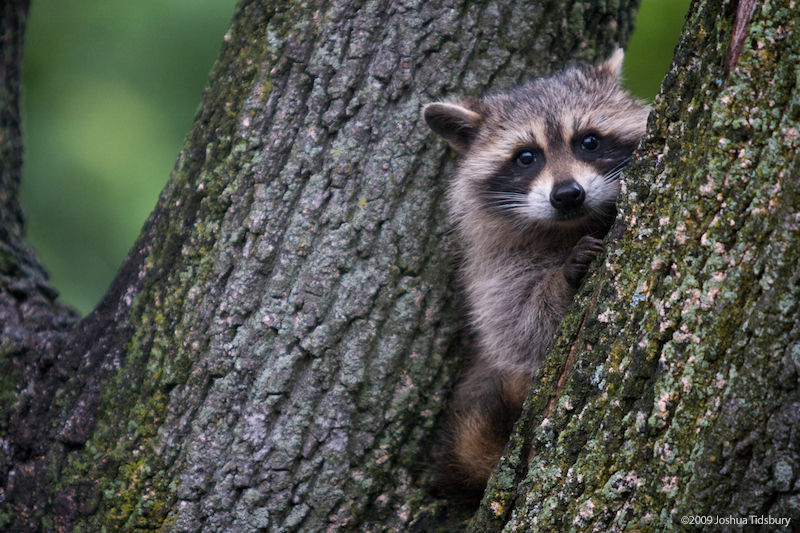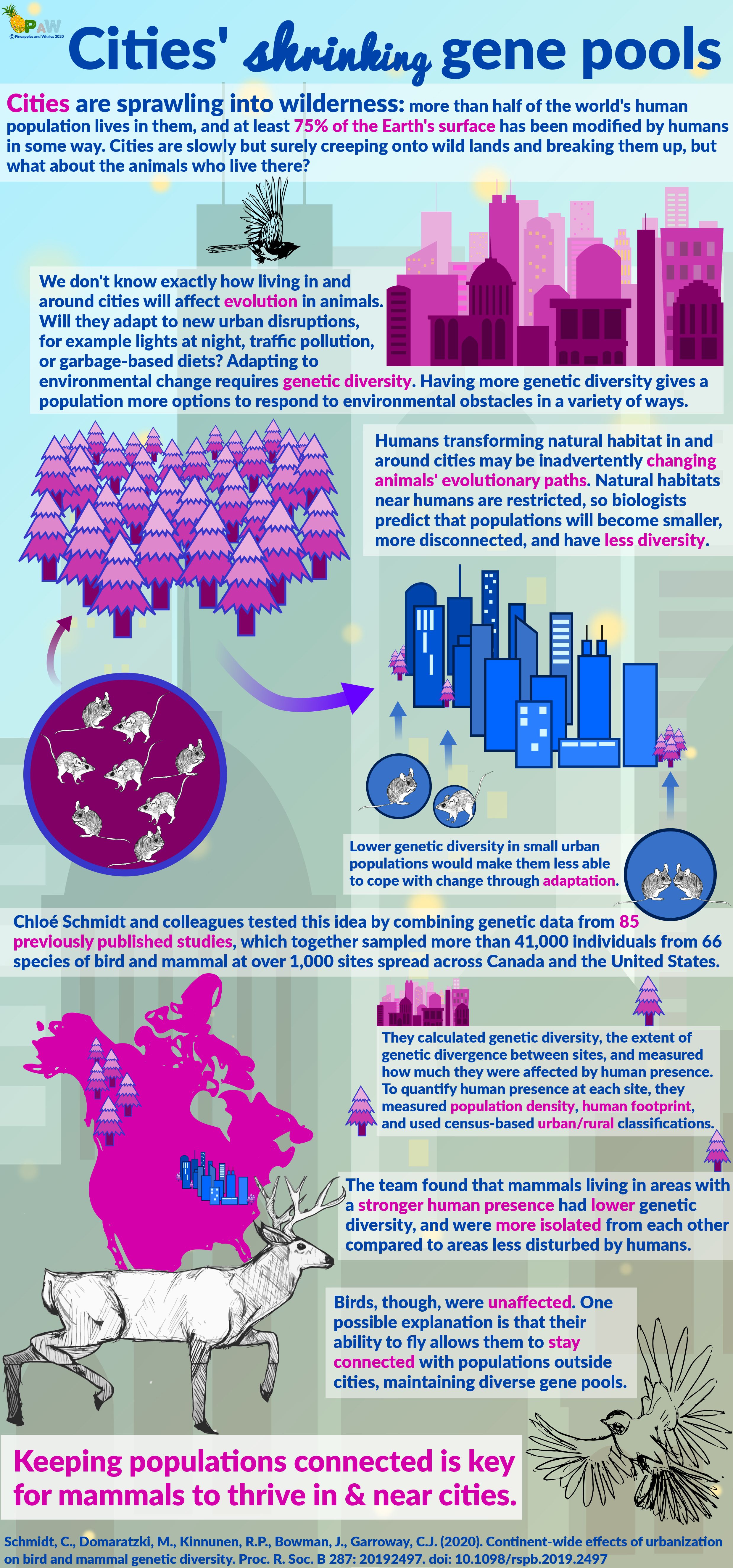
Compared to their more “wild” counterparts, mammals living in and around cities were found to have smaller population sizes and lower genetic diversity. // Image: Josh Tidsbury, Flickr
Cities negatively altering mammal evolution
Cities are influencing evolution in ways we are only beginning to notice, University of Manitoba biologists report in Proceedings of the Royal Society B. They note that cities may be lowering mammals’ ability to evolve in response to changing environments.
This is because, compared to their more “wild” counterparts, mammals living in and around cities were found to have smaller population sizes and lower genetic diversity, limiting their ability to adapt to changes in the environment. What’s more, city and rural mammals are drifting apart, genetically speaking, but some bird species may be bucking these trends, the researchers write in their paper “Continent-wide effects of urbanization on bird and mammal genetic diversity.”
“Good habitats for urban wildlife tend to be ones that are minimally touched by humans, and they’re becoming rarer and rarer. When we convert natural spaces for human use, we create a situation where wild populations in and around cities are forced to live in small isolated populations,” says Chloé Schmidt, lead author and biological sciences graduate student at UM. “On top of that, these small populations have lower genetic diversity and more potential for inbreeding, making them less able to deal with changing environments. Cities are constantly changing, so this may not be great news for urban mammals.”
Seventy-five per cent of Earth’s land has been modified to support cities, and this is causing declines in the number of species and the number of wild populations across the globe. Among vertebrates alone, the World Wildlife Fund (WWF) estimates populations have experienced an average 60 per cent decline in size since the 1970s.
The researchers suspected that these exhaustive reductions in population size could have unintended consequences for evolutionary change in animals by strengthening a force known as genetic drift, which erodes diversity over time and promotes genetic distinctiveness between populations. This proved to be the case for mammals: genetic diversity in populations living near humans was changed in ways that could negatively affect their chances of thriving in cities long-term. Genetic diversity in birds, on the other hand, seemed relatively unaffected.
The researchers tested their predictions using publicly archived genetic data sets for North American birds and mammals, reanalyzing data from 85 studies at 1,008 locations spanning 41 mammal and 25 bird species. This amounted to a reanalysis of genetic data from more than 41,000 individuals. As more data exists for mammals than for birds, they caution their findings in birds should be treated as preliminary. Still, flight may be a factor that enables bird populations to keep connections across fragmented cities and maintain larger gene pools, because they can get around roads and buildings in ways that most mammals can’t.
“The emergence of cities and the demand we place on natural resources to support urban dwellers has well-established negative effects on species diversity. Our results provide compelling evidence that our activities also contribute to a loss of biodiversity at the genetic level as well. While we don’t usually think of cities and other lands that we humans use as natural places, they are actually a new sort of nature where the vast majority of our interactions with plants and animals now take place,” says Colin Garroway, assistant professor in biological sciences at UM, and Schmidt’s academic advisor.
“If we want to continue to enjoy and benefit from nature, we will need to think differently about the way we use lands and build cities. Particularly we need to reduce the effects of habitat fragmentation and allow populations to connect with each other,” he says.
By 2050, it is estimated that only 10 per cent of earth’s surface will be unaltered by humans.
UM biological sciences graduate student Riikka Kinnunen, UM associate professor of computer science Mike Domaratzki, and Jeff Bowman, a research scientists with the Ontario Ministry of Natural Resources and Forestry, were collaborators.
The Natural Sciences and Engineering Research Council of Canada Discovery Grant, and the University of Manitoba supported this research.

Research at the University of Manitoba is partially supported by funding from the Government of Canada Research Support Fund.






